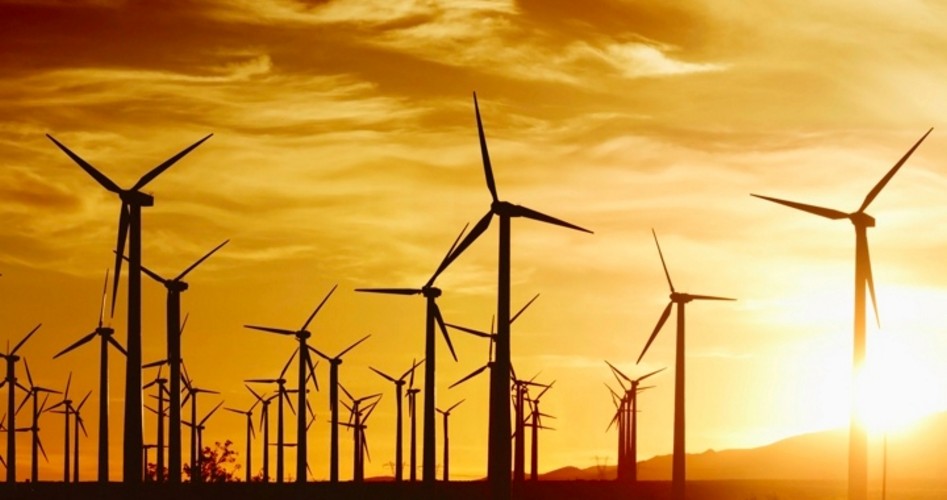Inside Track
Away With Wind Subsidies?
Relief from high utility bills may be on the horizon. That's the claim of 54 U.S. congressmen who support an end to federal wind power subsidies.
In an August 13 letter to House Leadership, U.S. Representative Mike Pompeo (R-Kan.) and 53 of his colleagues wrote that the wind industry survives, not on market demand, but by sponging off taxpayers through "a combination of state mandates and a federal tax credit that is now more valuable than the actual market price of the electricity these plants generate." The congressmen urged the House Ways and Means Committee to "allow the most anti-competitive and economically harmful tax provisions, specifically the wind energy production tax credit (PTC), to expire."
The letter argues that "crony" handouts have already cost billions of tax dollars, and federal assistance reinforces excessive distortions in prices "leading to higher electricity costs for American families." In the past five years federal funding for wind alone has exploded by more than ten-fold, from $476 million the year Obama took office to $4.98 billion annually. Estimates from the Congressional Joint Committee on Taxation place a price tag of another $13.35 billion for a subsidy extension of just one more year. Keep in mind these amounts account for only direct federal wind subsidies and do not include funding from state sources or assistance for other so-called renewables such as solar and wind, nor do they include hidden and lifetime costs, as we will see shortly. By comparison, the anti-"fossil fuel" group Oil Change International reports that subsidies from both state and federal sources for oil, gas, and coal combined amounted to $21 billion last year. From these numbers it's easy to determine Big Brother's pet project.
Why the disproportion? The Energy Policy Act of 1992 enacted PTCs for renewables which were set to expire in 1999. However, lawmakers have continually renewed this federal entitlement program, which not only subsidizes windmill construction but also pays turbine owners per kilowatt hour for power they produce, regardless of its market value.
The current wind PTC expired at the end of 2013, but Congress can decide to reenact it any time this year. The House Ways and Means Committee is scheduled to decide its fate after the August recess, but pundits predict the score will be settled in the lame-duck session following November's midterm elections.
Even if the PTC isn't renewed, its effects will still be felt for another decade. The tax credit that expired in 2013 applies 10 years' worth of subsidies to turbine operators. According to the Internal Revenue Service, wind developers are eligible for the 2013 PTC provided they incurred at least five percent of their construction costs by the end of last year. As a result, the Congressional Joint Committee on Taxation says the PTC in 2013 alone has a lifetime cost of more than $12 billion.
The Institute for Energy Research (IER) recently published estimates that it costs between 15.1 and 19.2 cents per kilowatt hour for wind energy production, some 70 to 140 percent higher than costs of energy production from coal, oil, and nuclear power. Subsidies and tax benefits account for a portion of these amounts, as do additional transmission, capital, and operating costs unique to wind farms. The variability of wind is another major factor. When wind stops blowing and turbines are idle, reliable power plants must fill in to meet demand. The continual process of ramping up-and-down is expensive. To add insult to injury, federal subsidies ensure wind turbine owners are paid at least 2.3 cents per kilowatt hour of energy produced, even when demand drops and the market value of electricity falls below 2.3 cents. The bottom line of these additional costs is that Americans are paying between $8.5 and $10 billion extra in electric rates per year, which is in addition to the $12 billion lifetime price tag of the 2013 PTC.
Quoting a study by the American Tradition Institute, IER noted another major deficiency of wind power. It compared an $11 billion nuclear power plant built on 1,000 acres in South Carolina to a hypothetical wind farm of the same power capacity: "To get the same amount of electricity out of wind power that operates at a 30 to 40 percent capacity factor due to its intermittency, would require more than 1,700 turbines stretched across 200,000 acres [312.5 square miles — ed.], for an upfront investment of $8.8 billion, but providing less reliable power."
Despite these statistics, wind still has plenty of champions in Congress, so whether the tax credit will be renewed remains a mystery. House Ways and Means Chair Dave Camp (R-Mich.) and House Majority Leader Kevin McCarthy (R-Calif.) have both voiced their opposition, but most Democrats support the PTC.


